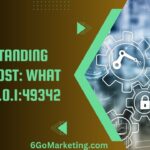In the fast-evolving landscape of Software as a Service (SaaS), communication stands as one of the most critical skills for a product manager.
As the linchpin between various stakeholders—ranging from developers and designers to sales teams and customers—your ability to convey ideas clearly and effectively can significantly influence the success of your product.
Effective communication ensures that everyone involved in the product lifecycle is aligned, informed, and working toward a shared vision.
However, communication in SaaS product management is not without its challenges. The diverse nature of the audience, each with varying levels of technical expertise and business priorities, can make it difficult to craft messages that resonate universally.
Additionally, the fast-paced environment often demands quick decisions and swift dissemination of information, leaving little room for ambiguity. Miscommunication or lack of clarity can lead to misaligned teams, delayed product launches, and ultimately, dissatisfied customers.
In this blog post, we’ll explore the key strategies that can help SaaS product managers overcome these challenges and communicate more effectively, ensuring that your team stays aligned, your stakeholders remain informed, and your product continues to deliver value.
Understanding Your Audience
Effective communication starts with a deep understanding of your audience. As a SaaS product manager, you must interact with a wide range of stakeholders, each with their own priorities, technical expertise, and communication preferences. To ensure your message resonates with each group, it’s crucial to tailor your approach based on who you’re addressing.
Identifying Key Stakeholders
- Developers: Focus on technical details, feasibility, and implementation challenges.
- Executives: Highlight business outcomes, ROI, and strategic alignment.
- Marketing and Sales Teams: Emphasize product features, market positioning, and customer benefits.
- Customers: Address their pain points, value propositions, and user experience.
Tailoring Your Communication Style
- Technical vs. Non-Technical Language: Adjust your vocabulary depending on the audience’s familiarity with technical concepts.
- Tone and Delivery: Use a formal tone with executives and a collaborative tone with team members.
- Medium of Communication: Choose the appropriate platform—emails for formal updates, Slack for quick discussions, and meetings for in-depth conversations.
Building Empathy with Your Audience
- Active Listening: Understand the concerns and motivations of each stakeholder group by actively listening and asking the right questions.
- Feedback Loops: Regularly seek feedback to ensure your communication is effective and adjust your approach as needed.
- Addressing Pain Points: Show empathy by acknowledging the challenges faced by your audience and providing solutions that meet their needs.
Overcoming Common Communication Barriers
- Jargon and Complexity: Simplify complex ideas without losing essential details, especially when communicating with non-technical stakeholders.
- Information Overload: Avoid overwhelming your audience with too much information. Focus on the most critical points that require their attention.
- Misalignment of Priorities: Recognize differing priorities and find common ground to align everyone toward the product’s success.
Understanding your audience is the foundation of effective communication. By identifying key stakeholders, tailoring your communication style, building empathy, and overcoming common barriers, you can ensure that your message is not only heard but also understood and acted upon by every group you interact with.
Mastering the Art of Storytelling
Storytelling is a powerful communication tool that goes beyond simply relaying facts. For SaaS product managers, storytelling can transform complex ideas into compelling narratives that resonate with diverse audiences, making your message more memorable and persuasive. Whether you’re pitching a new feature, aligning your team around a product vision, or communicating with customers, the right story can drive engagement and inspire action.
Why Storytelling Matters in SaaS
- Engagement: Stories capture attention and hold interest, making your message more engaging than dry facts alone.
- Memorability: People are more likely to remember a story than isolated data points or technical details.
- Persuasion: Stories help frame data in a way that highlights its significance, making your arguments more compelling.
Components of an Effective Story
- Relatable Characters: Introduce characters your audience can relate to, such as customers or team members, to humanize your message.
- Clear Conflict: Define the problem or challenge that your product or feature aims to solve. This conflict is the driving force behind your story.
- Resolution and Outcome: Show how the product or feature resolves the conflict and leads to a positive outcome, highlighting the value and benefits.
Practical Applications of Storytelling
- Pitching New Features: When introducing a new feature, frame it as a story where the customer faces a specific problem that the feature solves, enhancing their experience.
- Aligning Teams: Use storytelling to align cross-functional teams around a common goal by illustrating the journey from problem to solution, emphasizing each team’s role.
- Customer Communication: Share success stories of how your product has helped other customers, reinforcing trust and demonstrating value.
Using Data to Support Your Story
- Data-Driven Narratives: Weave data into your story to provide evidence that supports your claims, making your story both credible and impactful.
- Visual Storytelling: Use charts, graphs, and infographics to visualize key data points, ensuring that the numbers enhance rather than detract from the narrative.
Common Pitfalls to Avoid
- Overcomplication: Keep your story simple and focused. Avoid unnecessary details that could dilute your message.
- Lack of Relevance: Ensure your story is directly relevant to your audience’s needs, challenges, and interests.
- Ignoring Emotional Appeal: Don’t forget the emotional aspect of storytelling. People connect with emotions as much as they do with logic and data.
By mastering the art of storytelling, SaaS product managers can communicate more effectively, making complex ideas accessible, aligning teams with a shared vision, and engaging customers on a deeper level. A well-told story can be the difference between a message that is quickly forgotten and one that drives lasting impact.
Leveraging Data to Build Trust
In the SaaS industry, data-driven decision-making is essential, and as a product manager, your ability to communicate using data is crucial for building trust with stakeholders. Whether you’re advocating for a new feature, justifying a product pivot, or reporting on performance, data provides the evidence needed to support your arguments and gain buy-in from your audience.
The Role of Data in Communication
- Credibility: Data lends authority to your statements, making your arguments more convincing and harder to dispute.
- Clarity: Well-presented data clarifies complex ideas, helping stakeholders understand the rationale behind decisions.
- Transparency: Sharing data openly fosters trust by showing that decisions are based on objective analysis rather than subjective opinion.
Best Practices for Presenting Data
- Use Visuals Effectively: Graphs, charts, and tables are powerful tools for making data more digestible. Choose the right type of visualization for your data to convey your message clearly.
- Highlight Key Metrics: Focus on the most important data points that support your message. Avoid overwhelming your audience with too much information.
- Provide Context: Data without context can be misleading. Always explain what the data represents and why it matters to your audience.
| Metric | Current Month | Previous Month | Change (%) |
| Monthly Active Users (MAU) | 15,000 | 14,000 | +7.14% |
| Customer Churn Rate | 3.5% | 4.2% | -16.67% |
| Net Promoter Score (NPS) | 42 | 38 | +10.53% |
| Average Revenue Per User (ARPU) | $120 | $115 | +4.35% |
Example Table: Key Product Performance Metrics3. Tailoring Data for Different Audiences
- Executives: Focus on high-level metrics like revenue, customer growth, and ROI. Use data to show how your product strategy aligns with business objectives.
- Developers: Present technical metrics that relate to performance, stability, and scalability. Use data to justify technical decisions or prioritize features.
- Marketing and Sales: Share data on user behavior, customer demographics, and conversion rates. Highlight how the product meets market demands and drives sales.
Building Data-Driven Narratives
- Storytelling with Data: Combine data with storytelling to create a compelling narrative. Use data to illustrate the problem, justify the solution, and demonstrate the impact.
- Predictive Analysis: Use data not just to report on past performance but to predict future trends and guide strategic decisions.
- Benchmarking: Compare your data against industry standards or competitors to provide additional context and strengthen your case.
Ensuring Data Accuracy and Integrity
- Data Validation: Regularly validate your data to ensure accuracy. Inaccurate data can lead to misguided decisions and damage your credibility.
- Clear Attribution: Clearly attribute data sources to maintain transparency. This is especially important when using third-party data or benchmarks.
- Continuous Monitoring: Keep track of key metrics over time to spot trends early and adjust your strategy as needed.
By effectively leveraging data, SaaS product managers can build trust with stakeholders, justify decisions with confidence, and align the team around measurable goals. Data-driven communication not only enhances your credibility but also ensures that your product strategy is rooted in objective analysis, leading to better outcomes for the business and your customers.
Facilitating Cross-Functional Collaboration
As a SaaS product manager, you play a pivotal role in ensuring that different teams—such as engineering, design, marketing, and sales—work together effectively. Cross-functional collaboration is essential for the successful development and launch of your product, but it can also be one of the most challenging aspects of product management. Miscommunication, conflicting priorities, and siloed work can easily derail projects. To overcome these challenges, you need to foster strong collaboration and ensure everyone is aligned toward a common goal.
Challenges of Cross-Functional Collaboration
- Diverse Priorities: Different teams often have competing priorities. For example, the engineering team may focus on technical feasibility, while marketing is more concerned with time-to-market.
- Communication Barriers: Teams may use different jargon or have varying levels of understanding about the product, leading to miscommunication.
- Siloed Information: Without effective collaboration, teams can end up working in silos, resulting in duplicate efforts or misaligned objectives.
Strategies for Successful Collaboration
- Establish Clear Goals and Roles: Define the shared objectives for the project and clarify each team’s responsibilities. This ensures everyone knows their role and how they contribute to the product’s success.
- Regular Cross-Functional Meetings: Hold regular meetings with representatives from all relevant teams to discuss progress, address challenges, and align on next steps. These meetings help keep everyone on the same page and foster open communication.
- Use Collaborative Tools: Leverage tools like Jira for project management, Slack for real-time communication, and Confluence or Notion for shared documentation. These tools help streamline communication, ensure that everyone has access to the same information, and make it easier to practice resource leveling by efficiently managing workloads and deadlines.
Promoting a Culture of Collaboration
- Encourage Open Dialogue: Create an environment where team members feel comfortable sharing ideas, asking questions, and raising concerns. This openness leads to better problem-solving and innovation.
- Celebrate Shared Successes: Recognize and celebrate the achievements of cross-functional teams. Acknowledging the collective effort reinforces the importance of collaboration and boosts team morale.
- Facilitate Knowledge Sharing: Encourage teams to share their expertise and insights with one another. For example, have developers explain technical constraints to the marketing team or let sales share customer feedback with the engineering team.
Overcoming Common Collaboration Obstacles
- Aligning Conflicting Priorities: Use data and the product vision to align different teams around a shared goal. Highlight how each team’s work contributes to the overall success of the product.
- Managing Communication Overload: While regular communication is important, too much can lead to burnout and confusion. Ensure that meetings are purposeful and that information shared is relevant and actionable.
- Handling Resistance to Change: Some team members may resist new processes or collaboration efforts. Address concerns openly, provide training if necessary, and demonstrate the value of collaboration.
Examples of Effective Cross-Functional Collaboration
- Feature Development: Work closely with design, engineering, and QA teams to develop new features. Ensure that each team understands the feature’s goals, technical constraints, and customer needs.
- Product Launches: Coordinate between product, marketing, and sales teams to plan and execute product launches. Align messaging, timelines, and resources to ensure a smooth and successful launch.
- Customer Feedback Loops: Facilitate collaboration between customer success, support, and product teams to gather and act on customer feedback. Use this feedback to prioritize product improvements and address pain points.
By facilitating cross-functional collaboration, SaaS product managers can break down silos, align teams around a common vision, and ensure that all aspects of product development are working together seamlessly. Strong collaboration not only enhances efficiency but also leads to better products and, ultimately, happier customers.
Communicating the Product Vision Clearly
A clear and compelling product vision is the North Star that guides your team and stakeholders throughout the development and evolution of your SaaS product. As a product manager, it’s your responsibility to articulate this vision in a way that inspires and aligns everyone involved, from engineers and designers to executives and customers. When communicated effectively, a strong product vision can drive focus, foster collaboration, and keep the entire organization moving in the same direction.
The Importance of a Strong Product Vision
- Inspiration: A well-defined product vision inspires your team by providing a sense of purpose. It explains not just what you’re building, but why it matters.
- Direction: The vision serves as a strategic guide, helping teams make decisions that align with the long-term goals of the product.
- Consistency: A clear vision ensures that all stakeholders, regardless of their role, are working toward the same objectives, reducing the risk of misalignment.
Components of an Effective Product Vision
- Simplicity: The vision should be straightforward and easy to understand. Avoid jargon and keep it concise, so it’s easily remembered and repeated.
- Future-Focused: Your vision should paint a picture of the future you aim to create. It should articulate where the product is headed and the impact it will have on customers or the market.
- Customer-Centric: Focus on the value your product will deliver to customers. This keeps the vision grounded in real-world benefits rather than abstract ideas.
Example of a Simple Product Vision Statement: “Empowering small businesses to grow by providing them with the tools they need to manage their operations seamlessly.”
Methods for Communicating the Vision
- Consistent Messaging: Reinforce the vision regularly across all communication channels—team meetings, company newsletters, presentations, and one-on-one conversations. Consistency helps embed the vision into the organization’s culture.
- Visual Communication: Use visual aids like diagrams, roadmaps, or vision boards to illustrate the product vision. Visuals can make the vision more tangible and easier to grasp.
- Storytelling: Frame the vision as a story that describes the journey from the current state to the desired future. This can make the vision more relatable and inspiring.
Aligning the Team Around the Vision
- Involve the Team Early: Engage key stakeholders in the vision creation process. Involving them early ensures buy-in and helps align their goals with the broader vision.
- Tie Day-to-Day Work to the Vision: Regularly connect the team’s daily tasks to the overarching vision. Show how their work contributes to achieving the long-term goals, which fosters a sense of purpose and motivation.
- Use the Vision to Guide Decision-Making: When making decisions, refer back to the product vision. This helps prioritize initiatives that align with the vision and avoid distractions that don’t.
Communicating the Vision to External Stakeholders
- Customers: Share the vision with customers to help them understand where the product is heading and how it will continue to meet their needs in the future.
- Investors: Communicate the vision to investors to demonstrate the long-term potential and strategic direction of the product.
- Partners: Align your vision with that of your partners to ensure that collaborations are mutually beneficial and support the product’s goals.
Overcoming Challenges in Vision Communication
- Vision Drift: Over time, teams may lose sight of the vision due to changing priorities or market conditions. Regularly revisit and reaffirm the vision to prevent drift.
- Misinterpretation: Ensure that the vision is clearly articulated and understood by all. Avoid vague or ambiguous language that can lead to different interpretations.
- Vision vs. Execution: Balance the high-level vision with practical execution. While the vision should be aspirational, it must also be achievable, guiding the team in both strategy and action.
By effectively communicating the product vision, SaaS product managers can unify their teams, align stakeholders, and create a shared sense of purpose that drives product success. A clear vision not only sets the direction for the product but also serves as a rallying point that motivates and inspires everyone involved in bringing that vision to life.
Handling Difficult Conversations with Diplomacy
Difficult conversations are an inevitable part of a SaaS product manager’s role. Whether it’s addressing delays, negotiating with stakeholders over conflicting priorities, or delivering unfavorable news, how you handle these conversations can have a significant impact on your team’s morale, stakeholder relationships, and the overall success of your product.
Mastering the art of diplomacy in these situations is crucial for maintaining trust, fostering collaboration, and ensuring that issues are resolved constructively.
Common Scenarios Requiring Diplomatic Communication
- Project Delays: Informing stakeholders about delays in the product roadmap or feature releases.
- Resource Constraints: Negotiating for more resources or reprioritizing tasks due to limited bandwidth.
- Conflicting Priorities: Resolving disputes between teams with different objectives, such as engineering wanting to focus on technical debt while sales pushes for new features.
- Negative Feedback: Addressing negative feedback from customers, executives, or team members in a constructive manner.
Strategies for Navigating Difficult Conversations
- Prepare Thoroughly: Before entering a difficult conversation, gather all relevant facts, data, and context. Anticipate questions or concerns the other party may have, and prepare your responses accordingly.
- Stay Calm and Composed: Maintain a calm demeanor, even if the conversation becomes tense. Your composure will help de-escalate the situation and keep the discussion focused on solutions.
- Listen Actively: Show genuine interest in the other party’s perspective. Let them express their concerns fully before responding. Active listening not only builds trust but also helps you understand the root of the issue.
Quote: “Diplomacy is the art of letting someone else have your way.” – Daniele Vare
Focusing on Solutions Rather than Problems
- Shift the Conversation: Instead of dwelling on what went wrong, steer the conversation toward finding solutions. Highlight what can be done to resolve the issue and prevent it from recurring.
- Collaborate on Action Plans: Involve the other party in developing an action plan. This collaborative approach ensures buy-in and demonstrates your commitment to addressing the issue together.
- Be Transparent About Limitations: If certain requests or expectations can’t be met, be honest about why. Explain the constraints and propose alternative solutions.
Maintaining Positive Relationships
- Separate the Person from the Problem: Focus on the issue at hand rather than making it personal. Critique ideas, not individuals, to maintain a professional and respectful tone.
- Express Empathy: Acknowledge the other party’s concerns and feelings. Showing empathy can help diffuse tension and foster a more cooperative atmosphere.
- Follow Up: After the conversation, follow up with a summary of the discussion and agreed-upon actions. This reinforces accountability and shows that you take the conversation seriously.
Dealing with Resistance and Pushback
- Understand the Root Cause: If someone resists your proposal or decision, try to understand their underlying concerns. There may be valid reasons for their resistance that can be addressed through compromise or further explanation.
- Stay Firm on Non-Negotiables: While diplomacy is important, there may be non-negotiable aspects that you need to stand firm on. Clearly communicate these boundaries while remaining respectful.
- Use Data to Support Your Position: When appropriate, use data to back up your arguments. Objective evidence can help mitigate emotional reactions and focus the discussion on facts.
Turning Difficult Conversations into Opportunities
- Build Trust: Successfully navigating a tough conversation can actually strengthen your relationships with stakeholders. It demonstrates that you’re capable of handling challenges professionally and constructively.
- Encourage Open Communication: Use these conversations as an opportunity to encourage more open and honest dialogue within your team. This can lead to better collaboration and fewer misunderstandings in the future.
- Learn and Reflect: After a difficult conversation, take time to reflect on what went well and what could be improved. Use these insights to enhance your approach to future conversations.
Handling difficult conversations with diplomacy is a critical skill for SaaS product managers. By staying calm, focusing on solutions, and maintaining positive relationships, you can turn challenging situations into opportunities for growth and collaboration. Effective communication in these moments not only resolves immediate issues but also builds the trust and respect necessary for long-term success.
Utilizing Technology for Efficient Communication
In the modern SaaS landscape, where remote work and distributed teams are increasingly common, leveraging the right technology for communication is essential. As a product manager, you need to ensure that information flows smoothly across all channels, teams stay aligned, and everyone has the tools they need to collaborate effectively. The right mix of communication tools can enhance productivity, prevent misunderstandings, and keep your team connected, regardless of location. The right mix of communication tools can enhance productivity, prevent misunderstandings, and keep your team connected, regardless of location. Additionally, providing equipment for remote workers ensures they have the necessary resources to work efficiently and stay productive.
Importance of Choosing the Right Tools
- Streamlining Communication: The right tools can simplify complex communication processes, making it easier to keep everyone on the same page.
- Enhancing Collaboration: Tools that integrate well with other platforms enable seamless collaboration across different functions, from development to marketing.
- Reducing Information Overload: By centralizing information and providing clear communication channels, the right tools can help reduce noise and prevent important messages from getting lost.
Essential Communication Tools for SaaS Teams
- Slack (or Microsoft Teams): Ideal for real-time messaging, quick updates, and team-wide announcements. Channels help organize conversations by topic, project, or team.
- Zoom (or Google Meet): Critical for virtual meetings, especially when discussing complex topics that require face-to-face interaction. Video calls help build rapport and foster better communication.
- Jira (or Asana/Trello): Excellent for project management and tracking the progress of tasks. These tools ensure everyone knows what needs to be done, by whom, and by when.
- Confluence (or Notion): Great for documentation and knowledge sharing. Centralizing documentation helps ensure that everyone has access to the most up-to-date information.
- Email: Still essential for formal communication, particularly with external stakeholders or for detailed reports that need to be easily referenced.
Fact: According to a study by McKinsey, the average worker spends nearly 20% of their workweek looking for internal information or tracking down colleagues for help, highlighting the importance of effective communication tools.
Best Practices for Using Communication Tools Effectively
- Establish Clear Communication Guidelines: Define which tools should be used for different types of communication. For example, use Slack for quick updates, email for formal reports, and Jira for project tracking.
- Integrate Tools for Seamless Workflow: Ensure that your tools integrate well with one another. For instance, integrating Slack with Jira can automatically update team members on task progress, reducing the need for manual check-ins.
- Keep Channels Organized: In tools like Slack, organize channels by project, function, or topic to keep conversations focused and prevent information from getting scattered.
Balancing Synchronous and Asynchronous Communication
- Synchronous Communication: Use for discussions that require immediate feedback or when quick decisions are needed, such as during team stand-ups or crisis management.
- Asynchronous Communication: Ideal for global teams working across time zones. Use tools like Confluence or email for updates that don’t require immediate responses but need thoughtful input.
Example: If your team is spread across different time zones, consider recording meetings and sharing the recording along with notes in Confluence. This allows team members in different time zones to stay informed and contribute at their convenience.
Avoiding Common Pitfalls in Digital Communication
- Overreliance on Tools: While tools are essential, don’t rely solely on them. Sometimes a quick phone call or face-to-face meeting (even virtual) can resolve issues faster and more effectively than endless messaging.
- Communication Overload: Too many messages can overwhelm your team. Encourage concise communication and prioritize important information to prevent burnout.
- Lack of Personal Connection: Digital tools can sometimes feel impersonal. To maintain a strong team culture, incorporate regular video check-ins and social interactions to build rapport and trust.
Adapting to New Communication Trends
- AI and Automation: Consider using AI-driven tools to automate routine tasks, such as scheduling meetings or summarizing conversations. This can free up time for more strategic communication.
- Real-Time Collaboration: Tools that allow for real-time collaboration, such as shared documents or whiteboards, can be invaluable for brainstorming sessions and quick feedback loops.
- Remote and Hybrid Work: As remote work continues to grow, prioritize tools that support flexibility and inclusivity, ensuring that all team members can contribute equally, regardless of location.
By utilizing the right technology, SaaS product managers can enhance communication efficiency, foster better collaboration, and maintain strong connections with their teams. The key is to select tools that align with your team’s needs, establish clear guidelines for their use, and continuously adapt to new trends to keep your communication strategies effective and relevant.
Conclusion
Effective communication is the backbone of successful SaaS product management. As a product manager, your ability to convey ideas, align teams, and foster collaboration across diverse stakeholders directly influences the success of your product.
By understanding your audience, mastering the art of storytelling, leveraging data to build trust, facilitating cross-functional collaboration, and clearly communicating the product vision, you can ensure that your entire organization is moving in the same direction.
Handling difficult conversations with diplomacy, utilizing the right technology, and balancing both synchronous and asynchronous communication further strengthen your role as a communicator and leader. Remember, communication is not just about transmitting information—it’s about connecting with your audience, inspiring your team, and driving your product forward.
In the fast-paced and ever-evolving world of SaaS, the strategies outlined in this blog post can help you navigate the complexities of product management, build stronger relationships with your stakeholders, and deliver products that truly resonate with your customers. By continually refining your communication skills, you can lead your team to greater heights and ensure that your product achieves its full potential.










